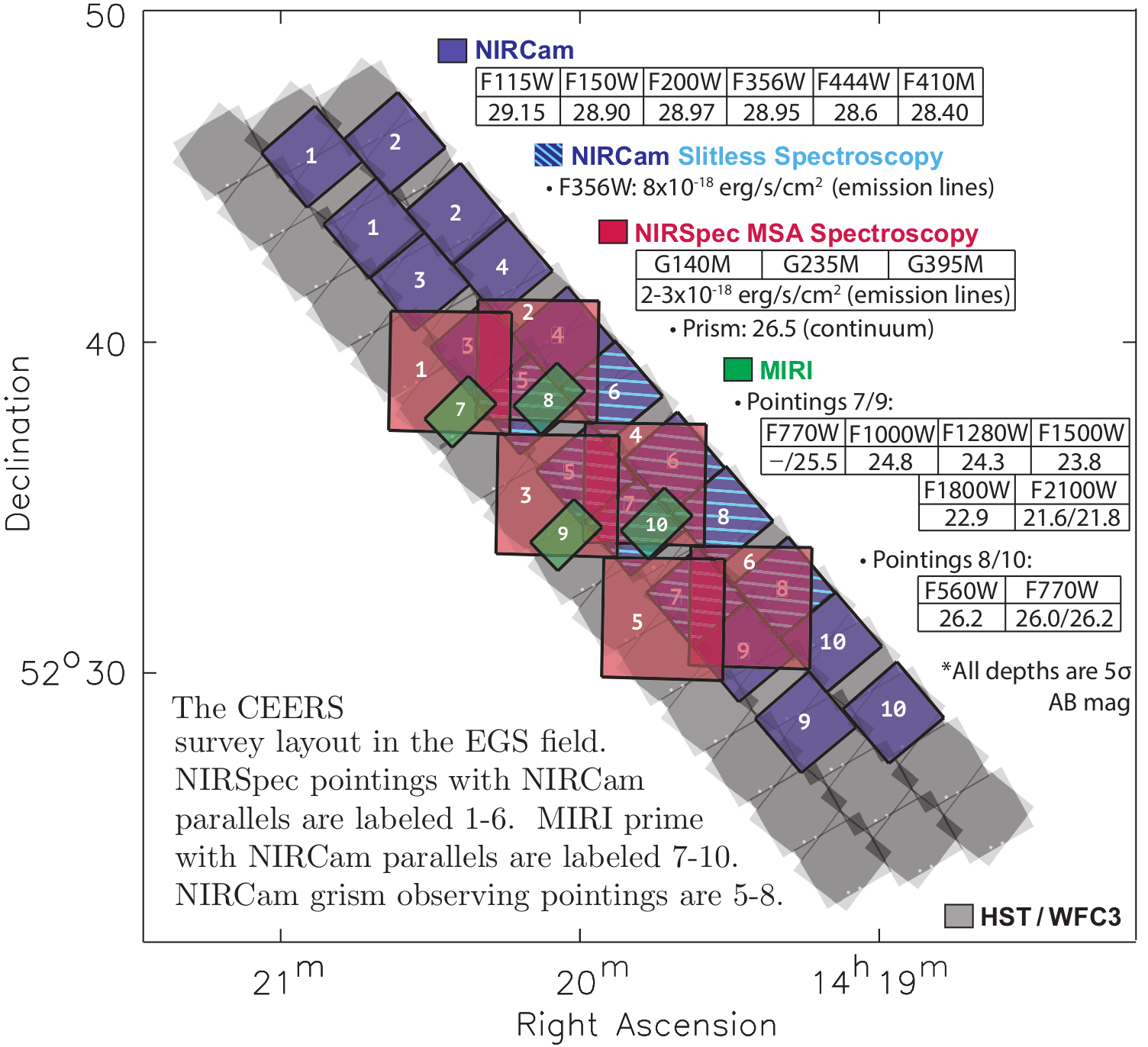CEERS Observing Modes
CEERS will obtain imaging and spectroscopy of the EGS field with six parallel JWST instrument modes:
NIRCam


The NIRCam observing strategy is set by the primary science goal of detecting a large sample of z~9-13 galaxies. CEERS is based on 10 NIRCam pointings covering ~100 square arcmin of the Extended Groth Strip (EGS) HST legacy field. CEERS will obtain:
- F115W + F150W + F100W will probe the Lyα break and will be paired with the LWF filters F277W, F356W and F444W at no cost.
- Additional F115W imaging will increase the dynamic range of the detectable Lyα breaks.
- In 4 fields, these additional F115W exposures are paired with the grism (R~1500), allowing the measurement of spectroscopic redshifts of z>4 star-forming galaxies and the calibration of NIRSpec slit losses
- In the remaining 6 fields, the additional exposures will be paired with F410W, which acts as a narrow-band filter for [OIII] emission at 6.7 < z < 7.6
NIRSpec
The NIRSpec MSA observations address diverse goals: measuring redshifts of high-priority distant galaxies, characterizing ISM and AGN evolution, and testing JWST observing strategies for Cycle 2. CEERS will observe 6 pointings with R~1000 and 4 pointings with R~100. The NIRSpec strategy includes:
- Orientation and tiling to maximize overlap with NIRCam and HST;
- R=1000 at 3 grating settings efficiently characterizes emission-line strengths;
- Diverse, high-priority targets with most lacking spectroscopic redshifts;
- Prism observations for efficient measurement of broad continuum features;
- Testing the impact of object centering through small dithers.
MIRI
The MIRI observations address two goals:
- In the two MIRI pointings overlaping the NIRCam mosaic, we aim for 5σ detections of the highest–redshift candidates in F560W and F770W, achieving long-wavelength constraints on z=4-10 candidate SEDs.
- In the remaining two pointings, we will use the continuous wavelength coverage of F770W, F1000W, F1280W, F1500W, F1800W and F2100W to study the rest-mid-IR features of galaxies, providing constraints on SFR & AGN diagnostics at z=1-3.